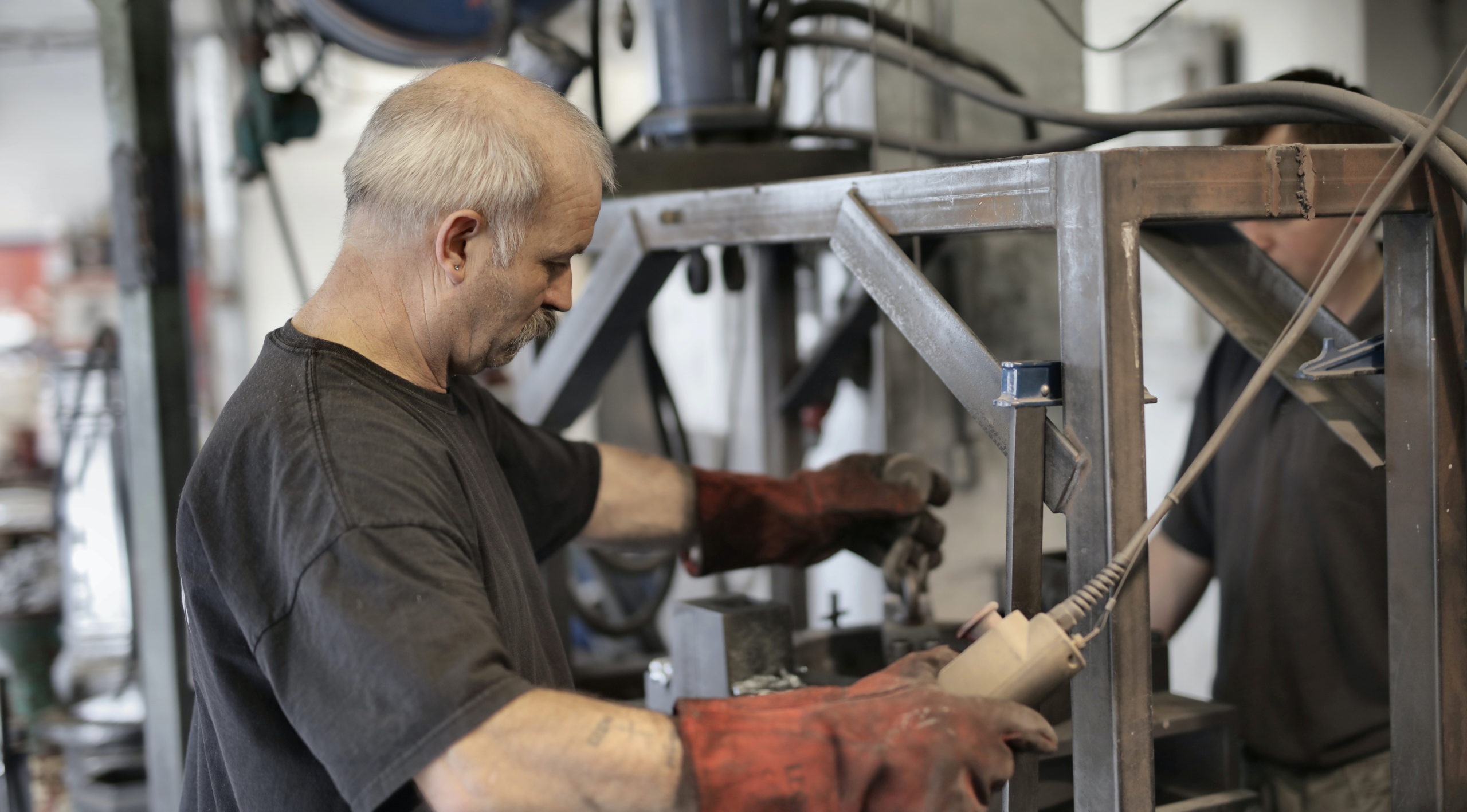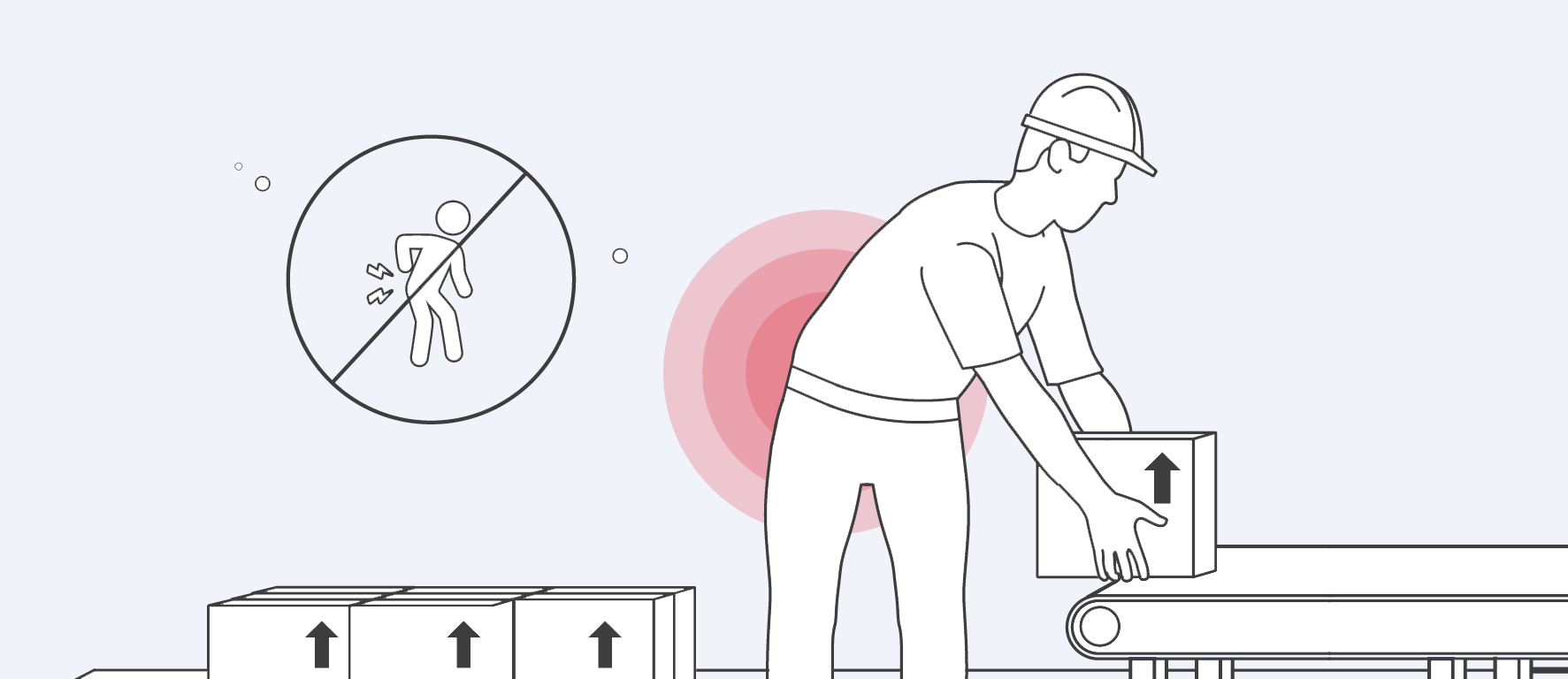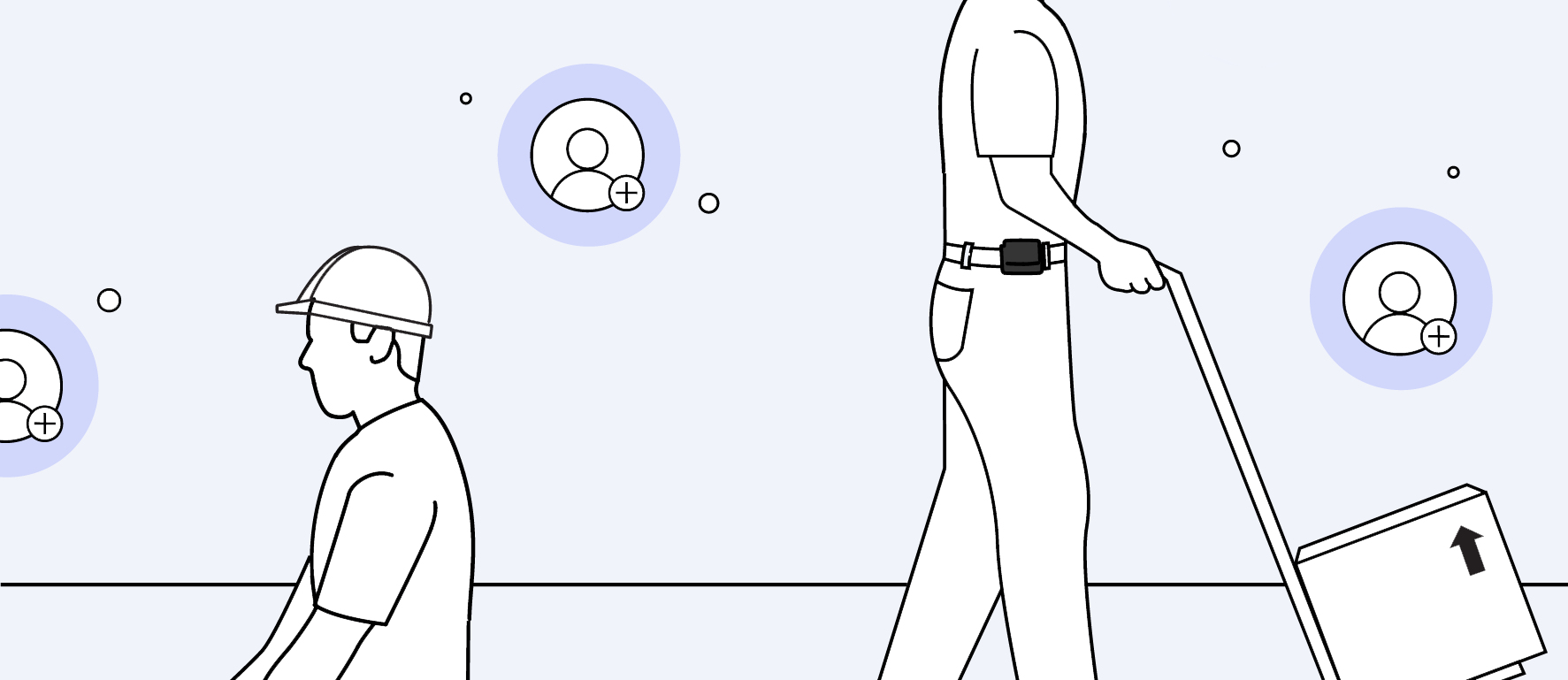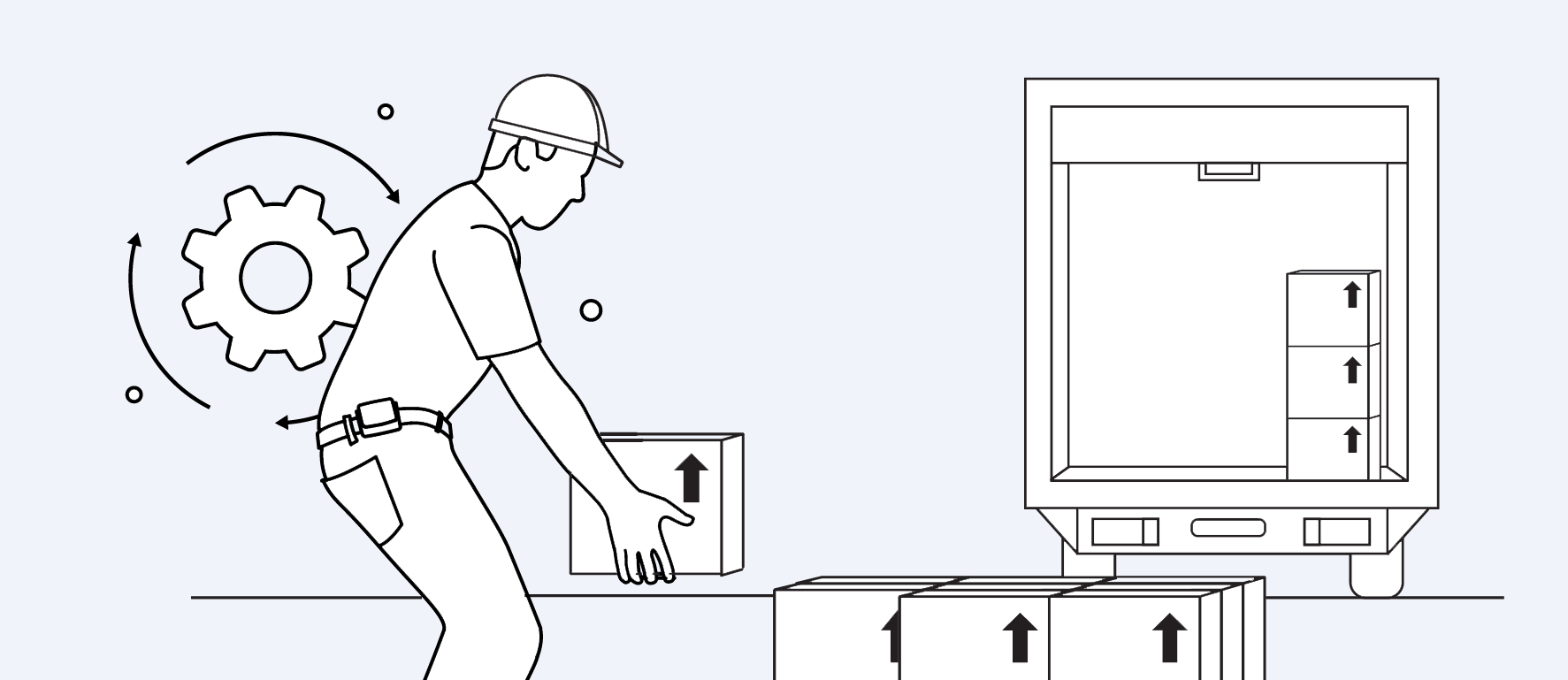Wearables and the Aging Industrial Workforce
AUGUST 30, 2021 |
KINETIC

Demographics are quickly changing as our society ages faster than ever before. By 2030, 1 in 5 Americans will be 65 or older, and soon afterwards those of retirement age will outnumber those under 18. As such, workers in their 50s and 60s makeup an increasing share of the workforce, especially as more Americans are working past the traditional retirement age of 65.
Businesses and employers are experiencing the effects of this aging labor market, including a loss in productivity, worker shortages and challenges with retention of existing employees and recruitment of entry-level talent.
The Industrial Workforce Leads the Trend
While an aging labor force affects businesses across the U.S. economy, the trend is particularly taxing on the industrial sectors due to an older-than-average workforce.
INDUSTRIAL WORKFORCE AVERAGE AGES

The manufacturing workforce is older, and aging faster, than the overall U.S. labor force with nearly one-fourth of the manufacturing workforce being 55 or older.
The median age of truck drivers is well above the national average of all workers.


Worker age in the construction industry is increasing at a faster rate than worker age for all U.S. industries combined.
To maintain the quality, productive labor force necessary for successful operations, industrial employers must adjust to today’s aging workers. Following are three ways wearable tech is helping organizations adapt and plan for the workforce of the future.
1. Preventing Aging Worker Injuries

Studies show older workers are less likely to be injured on the job, but when they are, their injuries are often more severe and may take longer to recover from. This further exacerbates labor shortages and declining productivity. Smart technologies, such as wearables, help employers prevent costly on-the-job injuries.
In industrial jobs, employees of all ages typically perform tasks that put them at higher risk of strain and sprain injury, such as lifting heavy loads, performing repetitive motions and maintaining tiring or awkward positions. Musculoskeletal injuries (MSDs) can result over time, and older workers may report more MSDs since they’ve had more time for conditions to develop.
Among an aging workforce, the importance of workplace ergonomics grows even greater. Ergonomic wearables boost safety and improve worker productivity by helping to prevent injuries and reduce fatigue and soreness.
A wearable safety solution:
→ allows employers to uncover and address specific ergonomic risks in the workplace
→ provides workers of all ages with continuous coaching for proper lifting, bending and reaching techniques
In fact, wearables have been shown to reduce the frequency of workplace injury by 50-60%.
2. Boosting Recruitment Efforts

Attracting and recruiting entry-level employees is one of the top challenges industrial employers face today. As existing workers age out of their manufacturing and construction jobs, younger workers are instead setting their sights on jobs that call for technology.
Providing workers with wearable tech can help attract talent that grew up surrounded by technology, and therefore expect their workplace to be up to date with the latest developments.
Millennials and younger generations coming of age during the rise of Industry 4.0 are accustomed to advanced technologies such as data analytics and AI. Appealing to this future workforce requires a tech-augmented workplace.
Furthermore, now more than ever, employees are attracted to workplaces that cultivate a culture of safety. Both potential and existing employees prefer to work for organizations that make worker health and safety a top priority.
3. Retaining Older Workers and Maximizing Productivity

Industrial sectors in the U.S. are plagued with some of the highest worker turnover rates, resulting in more time and more money being spent to replace and retrain their workforce. At the same time, productivity levels across industrial facilities have been declining for more than a decade.
Already facing labor shortages amidst an aging workforce and a growing skills gap, industrial employers are working to retain their older workers and maximize their productivity. Wearables can help in these efforts by offering a safer workplace that increases job satisfaction and improves efficiency.
By preventing ergonomic injuries, industrial wearables can reduce the rate of worker absences by 72%. Recently, a leading snack food manufacturer saw a 67% reduction in lost work days due to strain and sprain injuries within the first two quarters of deploying wearable tech. Management reports that their employees like and want to wear the device, and that those participating have gained a sense of ownership for their safety and wellbeing.
The Future Industrial Workforce is Tech-Augmented
Amidst a rapidly aging workforce, industrial employers can look to wearable tech to help prepare for the workforce of the future. This smart tech solution offers proven, data-driven injury prevention for aging (and all) workers; an edge for recruiting younger, tech-savvy employees; and an effective tool for increasing productivity and retaining experienced and new workers alike.
FEATURES
RESOURCES
2019 KINETIC © All rights reserved.